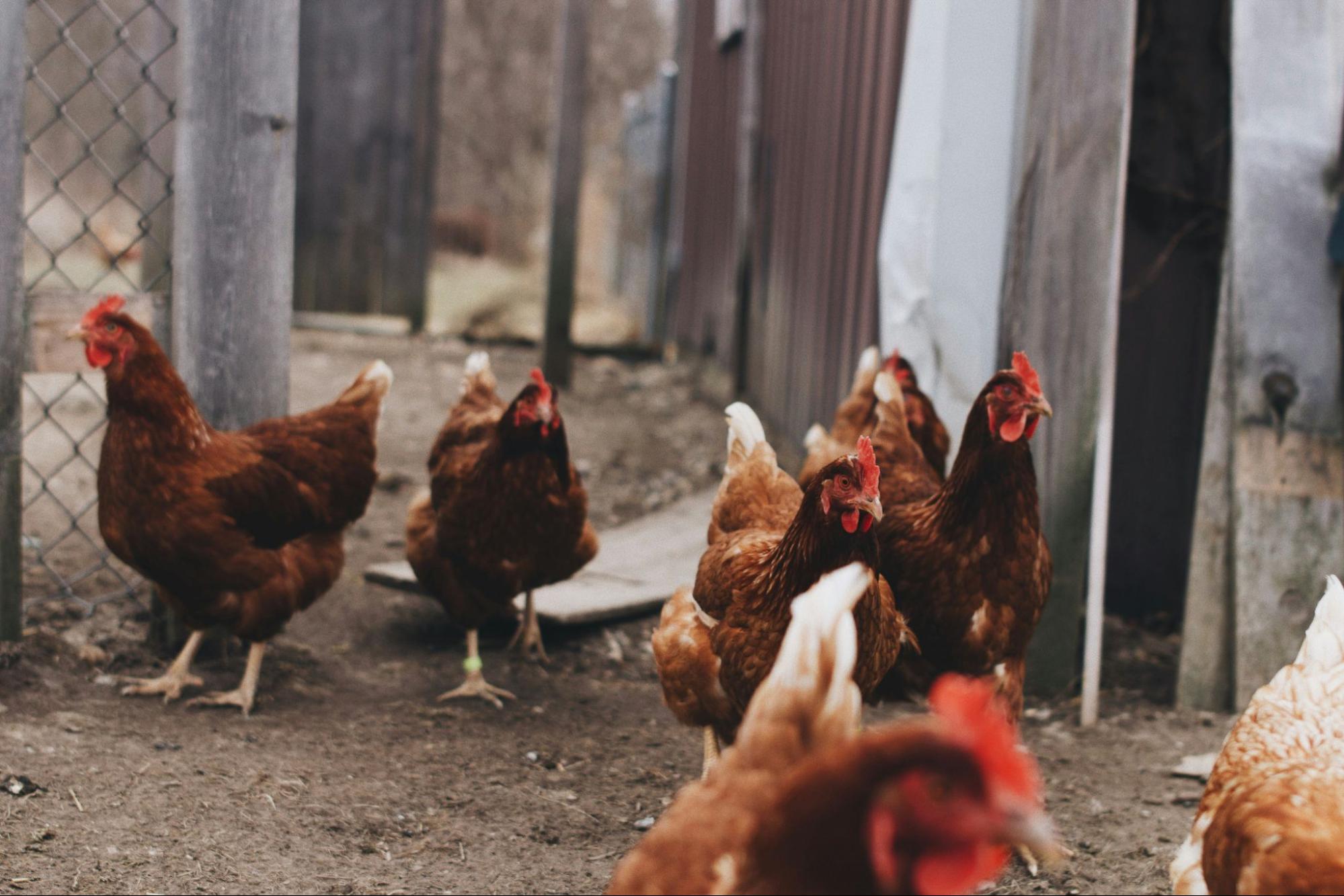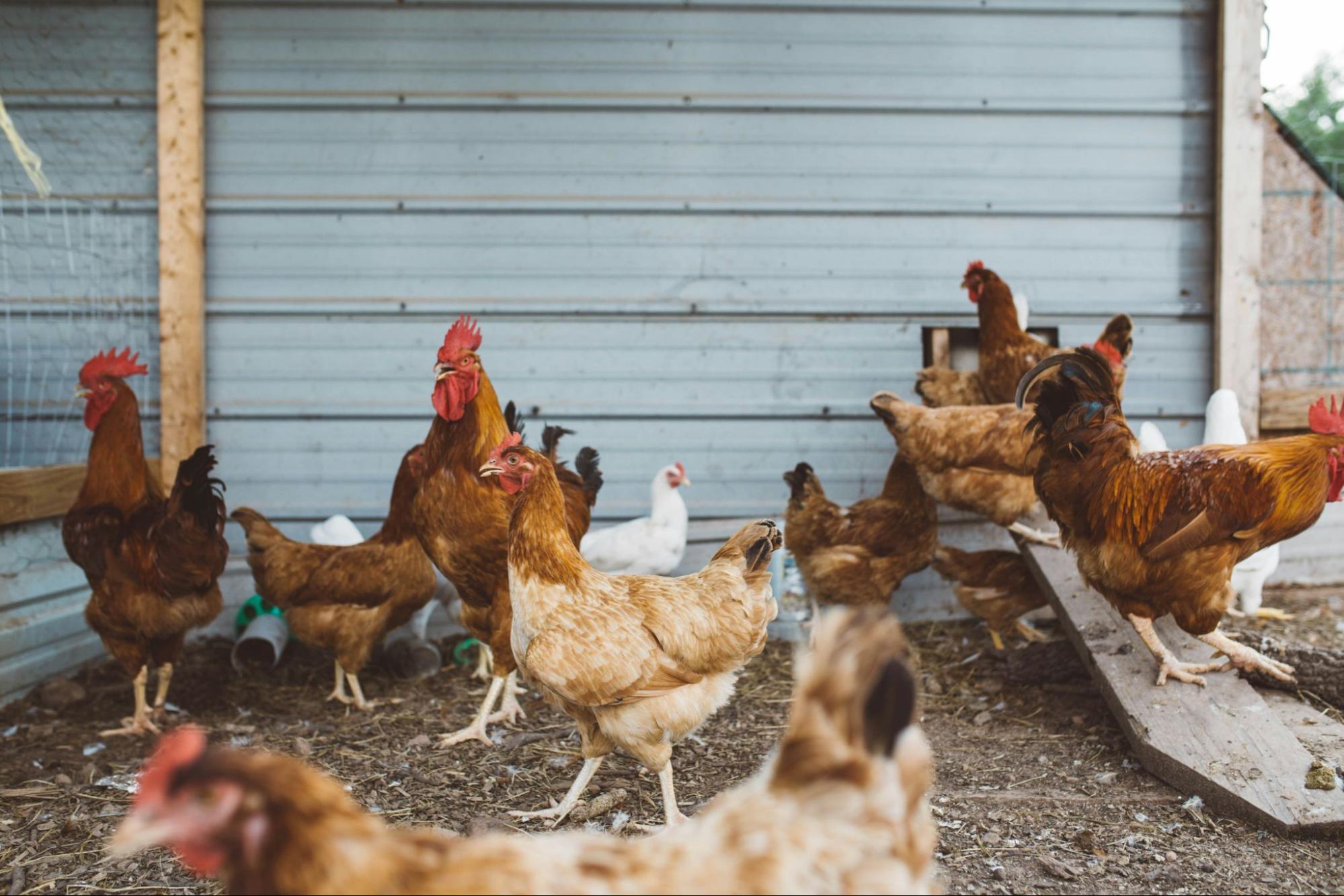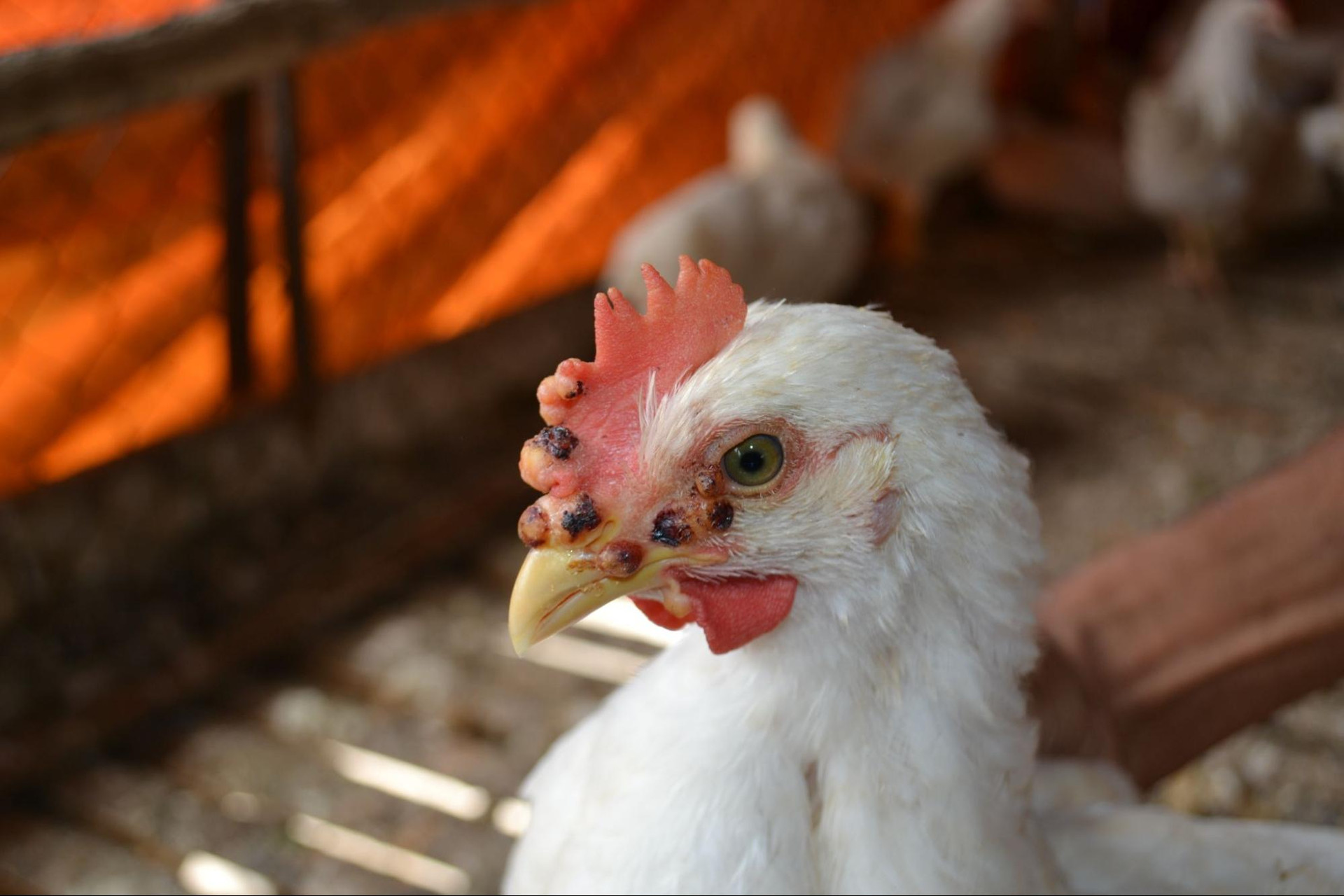A Guide to Fowl Pox in Chickens
Every good chicken keeper knows a healthy flock is a happy flock. That’s why it’s important to learn about the most common diseases and conditions that can affect your backyard chickens.
Among these diseases is the fowl pox virus, a highly contagious viral infection. You can protect your flock from fowl pox by learning more about the disease, its symptoms, and how you can treat or prevent it.
Educate yourself and learn everything you need to know with this guide to fowl pox in chickens.
What Is Fowl Pox?
The fowl pox virus acts similarly to the chicken pox infection that humans can get. Chickens that catch dry fowl pox will develop scab-like wounds and sores on their skin and combs.
This is the most common symptom, but other signs of fowl pox include decreased appetite, reduced egg production, or weight loss. Chickens might also develop ulcers inside their mouths or throats.
Ulcers indicate a less common form of fowl pox known as wet pox. These ulcers along the respiratory tract can lead to complications with breathing or eating. These symptoms are no joke, but most fowl pox symptoms heal, and the chicken can recover within a few weeks.
Treatments for Fowl Pox
There’s no cure for fowl pox, but there are ways to treat the disease and keep your birds comfortable while the infection continues. You can also give the uninfected birds in your small backyard poultry flocks the fowl pox vaccine for fowl pox prevention.
Once a chicken has survived fowl pox, they develop an immunity to the infection. Vaccinated birds have a higher chance of not being affected by it.
If fowl pox enters your flock, isolate the infected birds. Contact your veterinarian to see if any antibiotics can control any secondary infections that result from the disease.
You can keep an infected bird comfortable by keeping the coop clean and eliminating stressors in their daily activities. You might also use antiseptic, ointment, or other veterinarian-approved products to clean and soothe your birds’ scabs throughout the infection.
|
Recovery Tip: After recovery, keep a close eye on formerly infected chickens for signs of lingering health issues. Fowl pox can sometimes leave chickens with weakened constitutions, making them more vulnerable to stress and other diseases. |
How Do Chickens Get Fowl Pox?
Understanding these transmission pathways will help you implement effective prevention and control measures.
Direct Contact with Infected Birds
Fowl pox spreads readily through pecking, fighting, or even during social grooming, where the virus enters through skin abrasions or mucous membranes. This mode of transmission is particularly common in overcrowded conditions or where birds have access to shared spaces like roosts or nesting areas.
Bites from Infected Mosquitoes
Mosquitoes are significant vectors for fowl pox, bridging the disease between wild bird populations and domestic flocks. The virus persists in the mosquito for weeks, allowing it to infect multiple birds across different locations.
Contaminated Equipment and Surfaces
The durability of the fowl pox virus outside the host means it can linger on equipment, tools, and surfaces, waiting to infect the next bird that comes into contact. Regular disinfection protocols for all poultry equipment and infrastructure are essential to mitigate this.
Scabs and Feather Follicles
Infected birds shed the virus through scabs and affected feathers, contaminating their environment. These materials can harbor the virus, posing a risk to healthy birds through direct contact or when they inhale dust containing dried scabs.
Vertical Transmission
Though less common, there's evidence suggesting that fowl pox can be transmitted vertically from hen to egg. This potential route highlights the importance of vaccinating breeding stock and maintaining a high level of biosecurity in hatcheries.

How to Prevent Fowl Box in Your Flock
Follow the following preventive measures to reduce the risk of fowl pox in your flock. Ensure their health by protecting your chickens from this disease.
Regular Vaccination
The most effective way to prevent fowl pox is through regular vaccination. Vaccines are available for both the dry and wet forms of the disease. For optimal protection, the vaccination process can begin as early as the first day after hatching. Consult with a veterinary professional to determine the best vaccination strategy for your flock.
Maintain Strict Biosecurity Measures
This can significantly reduce the risk of fowl pox spreading among your chickens. Key practices include the following:
- Quarantine new birds. Always quarantine new or returning birds for at least 30 days before introducing them to your flock.
- Limit visitor access. Restrict access to your poultry area to prevent the introduction of diseases.
- Disinfect regularly. Regularly clean and disinfect coop areas, feeders, and waterers to eliminate potential virus carriers.
Control Mosquito Populations
Since mosquitoes are a primary vector for fowl pox, controlling their population around your poultry environment is vital. You can reduce mosquito numbers by eliminating standing water where mosquitoes breed, using mosquito repellents, and installing screens or mosquito nets in coop areas.
Improve Coop Ventilation
Good ventilation is essential in preventing respiratory forms of fowl pox and other airborne diseases. Ensure your coop is well-ventilated to provide fresh air and reduce humidity levels, which can help deter mosquito activity and the spread of the virus.
Implement Good Nutrition
A well-balanced diet can maintain a strong immune system in chickens, helping them resist infections like fowl pox. Ensure your flock's diet includes all necessary nutrients, vitamins, and minerals. Consider supplements if your regular feed lacks certain essential components.
Regular Health Checks
Perform regular health checks to monitor your flock for early signs of fowl pox or other illnesses. Early detection can prevent the spread of the disease. Pay attention to changes in behavior, appearance, and egg production, as these can be early indicators of health issues.
Keep Wild Birds Away
Wild birds can carry and spread fowl pox to your chickens. Use bird netting or other deterrents to prevent wild birds from accessing your chickens' feed and water, which can reduce the risk of disease transmission.
Manage Injuries and Stress
Minimize stress and injuries within your flock, as these can make chickens more susceptible to diseases. Implement practices that reduce pecking and fighting, and manage the flock density to ensure ample space for each bird.
|
Pecking Order Solution: Consider using peepers or blinder glasses for particularly aggressive birds. These devices can help mitigate harmful pecking behaviors without causing pain to the chickens. |
Fowl Pox Vaccination Strategies
Each type of vaccine offers a different level of immunity and is suited for various ages and types of flocks. The effectiveness of a vaccine can greatly influence the overall health and productivity of your chickens.
The table below outlines the primary vaccination methods available, their effectiveness, and their recommended application to help you make an informed decision.
|
Vaccination Method |
Effectiveness |
Recommended for (Age/Type of Flock) |
|
Live Attenuated |
High |
Older chicks and adult birds |
|
Recombinant Vaccines |
Very High |
All ages, especially in high-risk areas |
|
Inactivated Vaccines |
Moderate to High |
Breeding stock and layers |
FAQs on Fowl Pox in Chickens
Ensure your flock remains healthy and productive. Learn insights into the prevention, treatment, and more of this viral infection.
How can the pigeon pox vaccine prevent fowl pox in chickens?
The pigeon pox vaccine, while designed for the pigeon pox virus, may offer cross-protection against the pox virus in chickens. However, its use should be discussed with a vet to ensure it's appropriate and safe for your specific poultry needs.
What are the initial signs of a slow-spreading viral infection like fowl pox in chickens?
Early signs include lethargy, reduced egg production, and the appearance of lesions or scabs, particularly on unfeathered areas. Prompt identification and isolation of infected chickens are key to managing outbreaks.
Is there a difference in managing an infected chicken with dry vs. wet fowl pox?
Yes, the management differs primarily in the care required. While both forms of fowl pox necessitate isolation, wet fowl pox, affecting the mouth and throat, may require more supportive care, such as ensuring the infected chicken can eat and breathe comfortably.
Can infected chickens recover from fowl pox without intervention?
Infected chickens can recover from the dry form of fowl pox without significant intervention, as it's generally less severe. However, supportive care improves recovery chances, and veterinary advice is crucial for managing wet fowl pox due to its potential severity.
How effective is quarantine in controlling the spread of fowl pox among a flock?
Quarantine is highly effective in controlling the spread of fowl pox, as it prevents direct contact and minimizes the risk of transmitting the pox virus to healthy birds. Implementing a quarantine for new or sick birds is a critical component of a comprehensive biosecurity program.

Safeguard Your Flock!
Whether you’re a seasoned chicken keeper or just starting your first flock, Stromberg’s Chickens has the resources and products you need to take good care of your birds. In addition to poultry vaccines, consider using electric chicken fencing and other predator control supplies to keep your flock healthy, secure, and safe.
Do you have experience with fowl pox in your flock? Share your stories, tips, and advice with your fellow chicken enthusiasts below.

